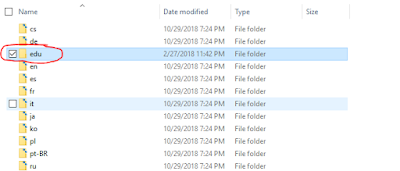When I take over the
DevOps project to do the automation work. My project is not juts to streamline the software development process, it involves in large number of internal systems. For a company with many legacy systems and different business process. It is literally re-engineer the business flow.
My challenge is to have the people who know the business flow and the technology and make them work together. I do not want to hire BA because I have enough people who know business knowledge. The pressing task to have more person to code the logic. Thanks to my language background, the solution I found is to use different languages to solve the problem.
The first decision I made is to have
no-GUI at all. The fancy GUI is nice to a new user; however, it will block the future automation for good. When you have a meeting with your financial planner, you will notice how many times s/he do copy/paste from one system to the other.
To fast code the solution, I need a
scripting language or a language support scripting feature. That language should be good for folks with less coding experience. I do not need them to understand what is singleton pattern or difference between NTLM and Basic Authentication. I want my dev team to focus on the technical challenges and provide API's. Biz-background people can use those API's to streamline those processes in his/her area.
The initial setup is like the diagram following. Part1 is finished by biz people by invoke API's provided by dev's working on Part2.
I landed on the
PowerShell language for Part1. PowerShell (PS) is designed for support/op folks. It has large number of samples. The most compelling reason for PS is that it can move the interface line from top to very bottom in the above diagram.
PS can go deeper. Almost everything C#/F#/VB.net can do, PS can do. At the project initial stage, Part2 is much bigger than part1. I want a language has the potential to go deeper to the binary code in case my dev does not have the bandwidth to provide API. Other .Net languages can invoke PowerShell as well. As a result, the coding effort has little waste. A perfect eco-system where every bit of coding effort can be used and reused.
The current result is my biz people can code PowerShell and slowly push the "interface line" down to the ultimate binary format. The dev side does not have to deal with those "boring" business work. And the dev workload is getting less. By using PowerShell scripting language,
- Efficiency: one line PS code will do 10+ lines of .net language code. The overall progress will be faster when using a scripting language.
- cost saving, I have the potential to expand my team to accommodate more people with various programming level
- Solid and quick solution: both parties can focus on the area in which s/he has deep expertise. The implementation speed is good.
- Flexible solution: since the interface line can move up and down based on the resource / expertise.
- Vendor-independent: my solution is general enough so won't be locked in any vendor's customized solution.
When the automation happens, one of the push back is the job lose. Having a person in the domain is the deciding factor for project success. The PowerShell provide a comfortable environment for biz people to start and grow, which makes my biz part team stable.
To use a widely adopted language also stabilize the dev side. I witness many effort to have an in-house language which is only used in that team. Many vendor solution provides a programming interface which few people know how to use. The customized solution literally blocks the people from mainstream technology and few people wants their career to be in this situation. If you search for PowerShell, you can still find job openings requires that skill. This option really helps the adoption of the solution. With .net core moves to Linux platform, PowerShell 6 and all other .net languages will flood into Linux world. So the future is really bright.
So far I am very happy about the result!
BTW: if you want to use F# to write PS module, here is the
link.












